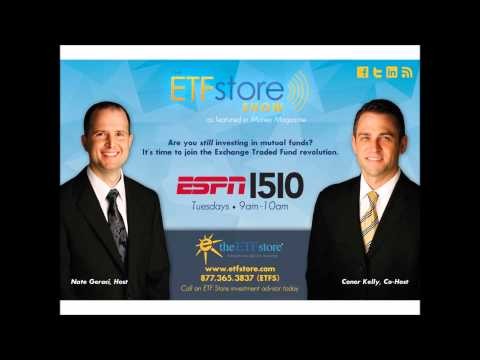Ten New Years Resolutions For ETF Investors
Post on: 29 Март, 2015 No Comment

With 2011 just around the corner, tis the season for pledges to better everything from health to wealth to happiness in the coming year. Below, we offer up ten New Years Resolutions for ETF investors looking to cut expenses, round out their portfolios, and maximize returns in 2011 [for more ETF insights, sign up for our free ETF newsletter ]:
10. Slim Down Your Expense Ratios
9. Stay Up To Date On New ETFs
The last year has been a period of record expansion for the ETF industry; more than 200 new ETFs, ETNs, and other exchange-traded products have launched during the last 12 months, bringing the total lineup to nearly 1,100 funds. Among the new ETFs to debut this year are products that may be appealing to all types of investors. Many of the new ETFs now launching offer hyper-targeted exposure or access to advanced investment strategies.
For example, the Long/Short VIX ETN from UBS (XVIX) or various leveraged products might not have much use for buy-and-holders, but can be extremely powerful tools for short term traders. On the other hand, the cost efficient Vanguard ETFs linked to the S&P 500 and other popular domestic and international equity benchmarks could be a big deal to those with a longer-term focus. But with an average of nearly one new ETF every trading day in 2010, keeping track of all the options can be a bit tricky.
In addition to the launch of more than 200 ETFs in 2010, the product pipeline has continued to fill with innovative and intriguing ideas for new funds. That means that 2011 should be another active year on the product development front, and that keeping up on all the various ETF options isnt going to get any easier. Fortunately, there are a few easy (and cheap) options for staying up-to-date on all that the ETF industry has to offer. Our free ETF newsletter covers all new product launches, as well as many of the filings made for proposed funds. The monthly roundup posted on the first of each month gives a quick rundown of the new additions to the space over the previous 30 days, while the ETF Edge newsletter offers a more in-depth look at the investment thesis behind all of the new ETFs on a monthly basis.
8. Drop Bad Habit Of Liquidity Screening
When seeking to identify the exchange-traded products consistent with an idea or strategy, the first step taken by many investors is to narrow down the universe of potential securities based on assets under management or screening volume. While different investors have different thresholds, the most common rules of thumb seem to imply that an ETF offers sufficient liquidity if it trades at least 100,000 shares daily or has at least $100 million in AUM. A common fear among investors relates to getting stuck in an illiquid security, and having to pay a premium to exit the position.
For certain securities, such as individual bonds or small cap stocks, implementing liquidity screens makes a lot of sense. But there are several misconceptions about the liquidity of ETFs and the usefulness of filtering out low volume funds. Because shares of an ETF can be created or redeemed by certain market participants, these securities are capable of what is often called spontaneous liquidity, meaning that historical trading volumes arent necessarily indicative of the true liquidity of an ETF. In reality, the liquidity of exchange-traded products is derived from the liquidity of the underlying assets, a relationship that is clearly lost on many investors.
Implementing liquidity screens isnt necessarily hazardous to your portfolios health, but it may result in the exclusion of products that would otherwise be effective and efficient tools for accomplishing a given investment objective. Paul Weisbruch of Street One Financial sums up the flawed logic behind liquidity screens quite nicely:
In essence, these rules address ETFs and ETNs as if they were individual small cap stocks from a feasibility of trading standpoint and largely this practice of installing such screens is akin to investing with blinders on. And in a world of increasing ETF usage, limiting your strategies due to embedded misconceptions regarding trading volume and liquidity simply handcuffs your overall performance and competitive ability because in order to keep pace with peers, one must often venture into new strategies as they become available or at least have the capacity to be nimble where necessary.
7. Fill In Those Portfolio Holes
The rise of the ETF industry has simplified the asset allocation process for many investors, making it possible to construct a balanced portfolio with only a handful of individual securities. But while establishing comprehensive exposure to stocks, bonds, and even commodities seems straightforward, many investors overlook some potentially valuable asset classes when constructing a portfolio. Consider the following all-ETF portfolio:














